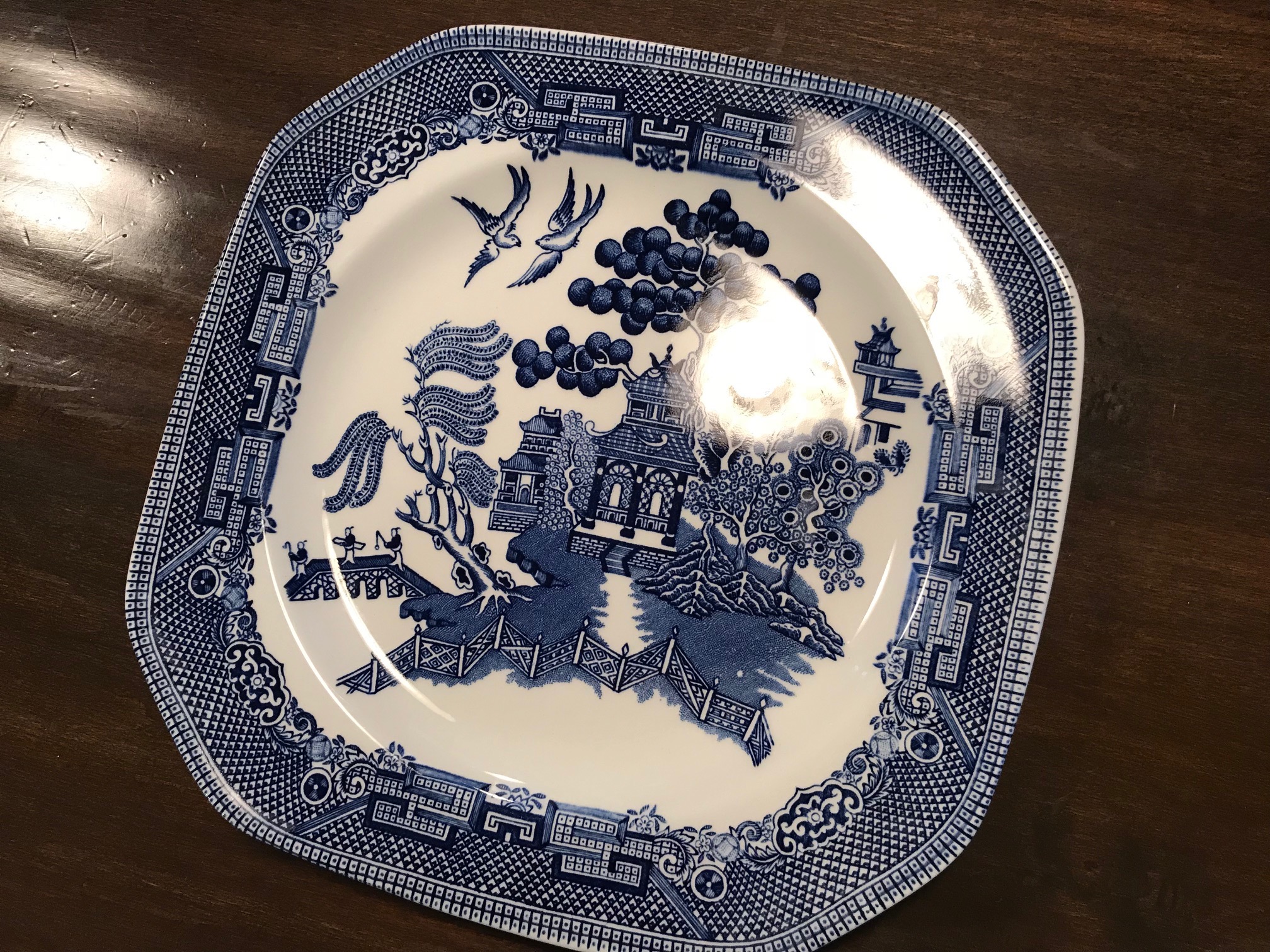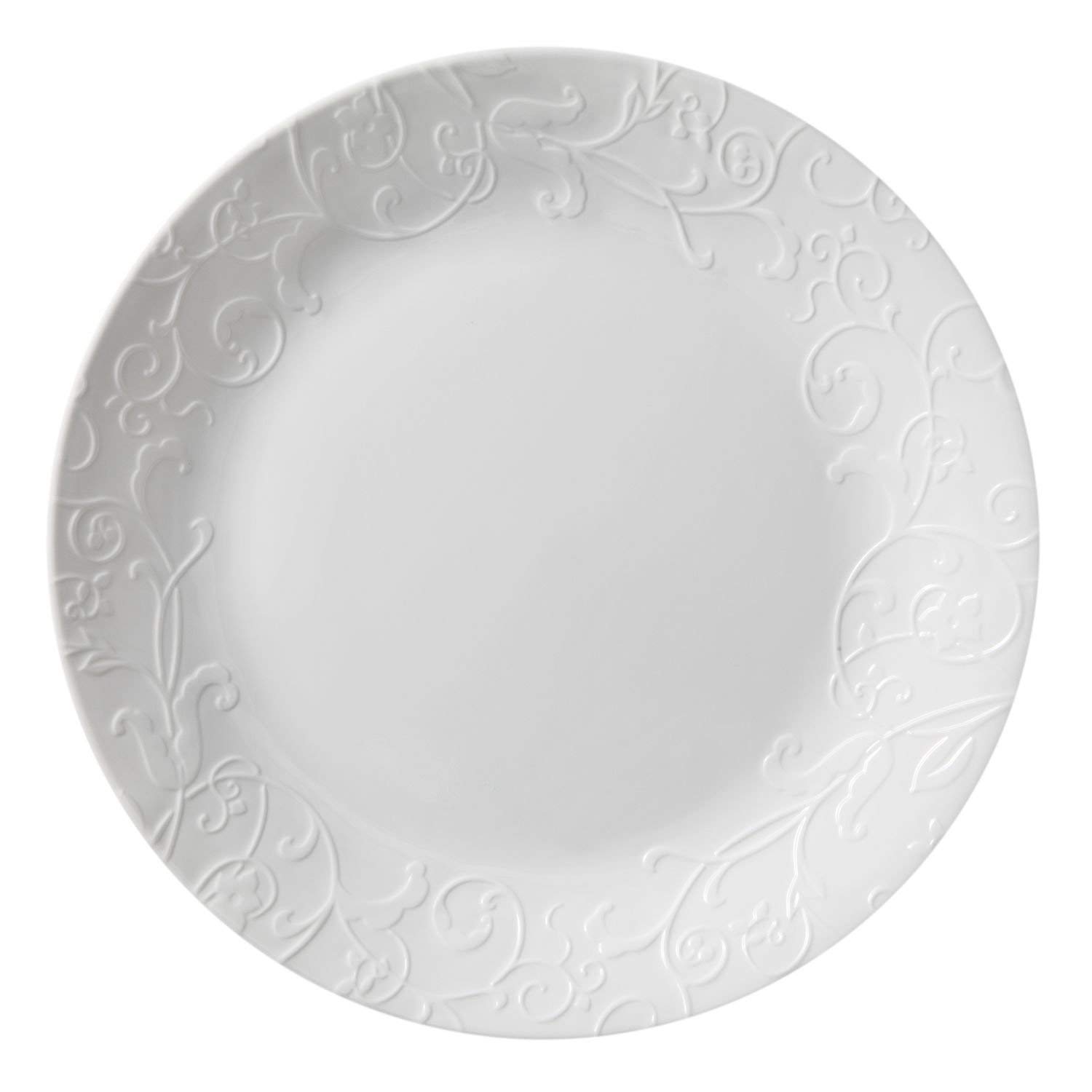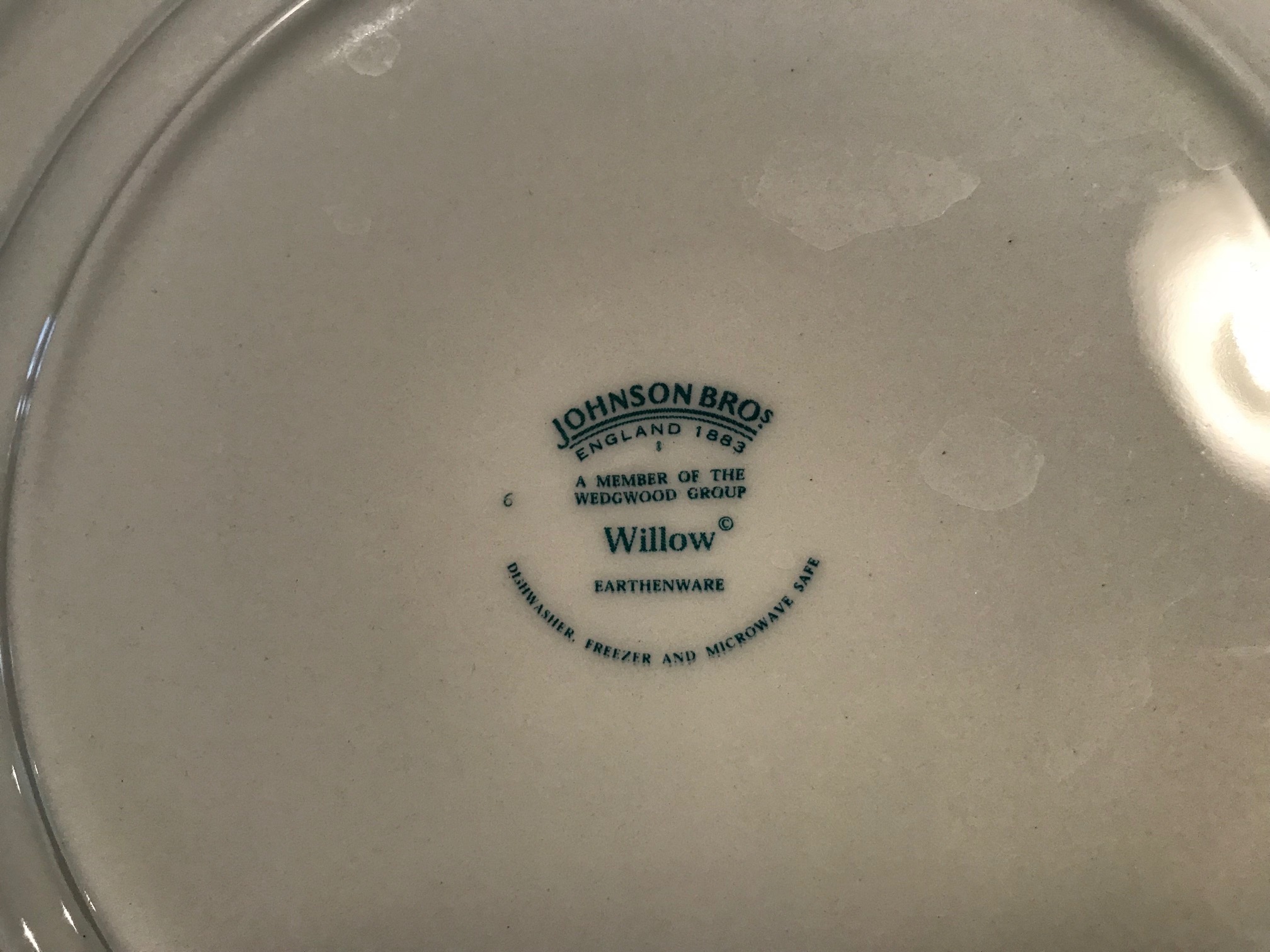Johnson Brothers Wedgwood Group Blue Willow Earthenware Octagonal Plate: 52,400 ppm Lead [90 is unsafe!]
This is a (c. 1980) Johnson Bros. (“A Member Of The Wedgwood Group” – see image below of back mark) Willow Earthenware octagonal plate, made in England. As with this piece with the same back mark [link]. I have not been able to determine the exact age of the piece, based on the back mark alone. If you have information that could help me with that, please let me know.
To see more “Made In England” pieces I have tested, Click Here.
To see more Johnson Brothers pieces I have tested, Click Here.
I would assume that since it does say that it is safe for microwave use but does not say “for over 100 years” – as the other similar piece I have up here on my blog does – that the manufacture date is possibly early 1980s (specifically, before 1983), although this is a guess.
I learned (with a little online research) that Martha Stewart helped popularize this pattern. Hey Martha! I would LOVE to sit down and have a little talk with you about Lead in dishware — how about it?
What are the actual XRF test results for this dish?
When tested with an XRF instrument, the readings for this piece were as follows:
- Lead (Pb): 52,400 +/- 1,700 ppm
- Mercury (Hg): ND (non-detect/ negative)
- Cadmium (Cd): ND (non-detect/ negative)
- Arsenic (As): ND (non-detect/ negative)
- Barium (Ba): 762 +/- 93 ppm
Tests were done for a minimum of 30 seconds each and were repeated to confirm the levels. XRF test results are science-based and replicable, however it is distinctly different from leach testing. Dishes may have been leach-tested for safety at the time of manufacture, but after decades of use may in fact be leaching Lead now (although they did not leach when they were brand-new).
Important To Note: Nearly all “Blue Willow” china that I have tested has been positive for extremely high levels of Lead, as this dish was. To see more Willow pieces I have tested, click here.
Why is that much Lead a problem?
How much Lead is too much?
While there is not [yet!] a modern standard (nor limit) for the XRF-detectable amount of Lead in dishware, the amount of Lead that is considered unsafe (and illegal) in modern consumer goods manufactured and sold as intended for use by children is anything 90 ppm Lead or higher in the paint, glaze or coating.
Vintage dishware is not (even) regulated by this (lax) modern standard – in fact no dishware is – as dishware is not fundamentally considered (by regulators) to be “an item intended for use by children“! However just using a minimum standard of common sense, one can look at these dishes with a level of 52,400 ppm Lead (as detected with an XRF), and understand that this amount is significantly more than 90 ppm and – well – children do use dishes, so really (even in the absence of regulations) we can reasonably apply the modern standard for children’s items to dishes or other items used in the preparation and serving of food.
Unfortunately the average consumer does not have access to a state-of-the-art XRF instrument that can accurately test for surface Lead-levels in consumer goods, down to single-digit ppm— as they run in the neighborhood of $50,000! This is why I test these items for folks and report the results on my blog (because I periodically have access to that type & caliber of XRF instrument (and am also trained and certified in using it) to test for Lead in consumer goods.]
Do you have a suggestion for Lead-free dishes?
As of yet, I have not come across a brand or pattern of high end decorative china that is consistently free of toxicants like Lead and Cadmium. As a result, my “best option” recommendation for a decorative “china” with a lovely pattern – one that is also 100% Lead-free (when tested with an XRF instrument), is the Bella Faenza design currently made by Corelle.
Bella Faenza is what I chose for our home, and use every day with my family. Here’s my Amazon affiliate link for Bella Faenza: https://amzn.to/2YZCV39, however, after you take a look at the available sets of that design on Amazon, you might want to head over to Target to see if they have the same set (possibly even for less money!)… as they often do.
I want more information about Lead in china – where should I start?
Here are some good links to start your inquiry if you are new to this concern:
To learn more about XRF testing, Click Here.
To learn more about the concern for Lead in pottery and dishes, please click here.
As always, thank you for reading and for sharing my posts!
Please let me know if you have any questions!
Tamara Rubin
#LeadSafeMama
*Amazon links are affiliate links. If you purchase something after clicking on one of these links I may receive a small percentage of what you spend at no extra cost to you (usually in the 4 to 6% range). Thank you for supporting my writing in this way.
Never Miss an Important Article Again!
Join our Email List






I am looking at the blue and white Wedgewood Pattern, buying it new on Wayfair. Is this set lead-free?
Hi Merryn – I really can’t say – it’s POSSIBLE that it is Lead free if it is newly made, but it is also possible for it to be high Lead, since there is not a regulatory standard for total Lead content in dishware.
This is not a Blue Willow piece, but it is a recently manufactured piece that is very high Lead (as an example of this still being an issue): https://tamararubin.com/2019/12/available-now-december-2019-at-sur-la-table-deruta-italian-salad-plate-16100-ppm-lead-90-is-unsafe-for-kids/
Tamara